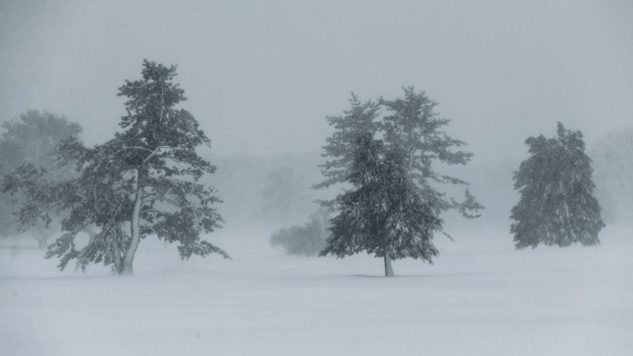Why Conversation’s Last Resort—the Weather—Is the Most Energizing Force in Writing
Photo by Scott Eisen / Stringer / Getty
Winter Storm Grayson has brought the most prosaic of topics—the weather—to the forefront of our thoughts, tongues and prayers. Widely denounced as the boring last resort in conversation, the weather serves the exact opposite purpose in print. It innervates the narrative, infusing stories with nature. It plucks at the reader’s flesh, numbs and singes the extremities, turns eyeteeth sensitive and faces crystalline; it bows the head, heats the chest, dampens the back, sends eyelids crashing together.
Many of our best tales—both real and imagined—are borne on the weather. After being marooned on the Isle of Calypso, it’s Poseidon’s vengeful gale that sends Odysseus on his Odyssey. An anomic, never-ending sunshine oxidizes the bleach bone island of Christopher Bollen’s The Destroyers. And a dry, craze-inducing Santa Ana wind rattles Joan Didion and Raymond Chandler’s real and imagined Angelenos.
Setting is one of the classic components of writing, and weather is the spirit which animates and hews the geographic body. “On a dark and stormy night” is much maligned, but the tableau set is irresistible, horrible, fantastic. Anyone who has tasted the anticipation of storm can attest to the metaphorical ionization that comes with the physical.
-

-

-

-

-

-

-

-

-

-

-

-

-

-

-

-

-

-

-

-

-

-

-

-

-

-

-

-

-

-

-

-

-

-

-

-

-

-

-

-








































